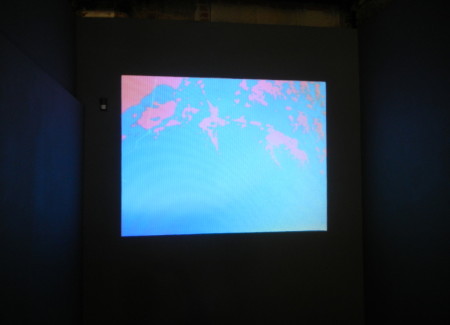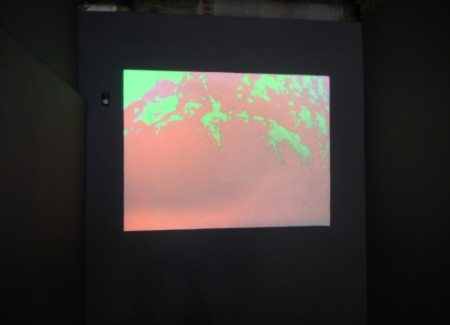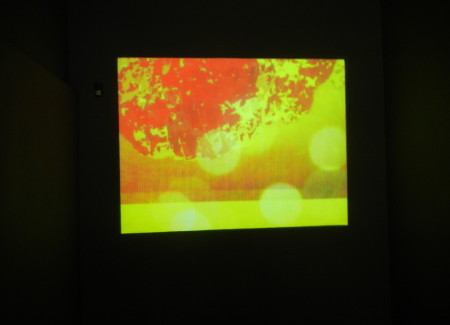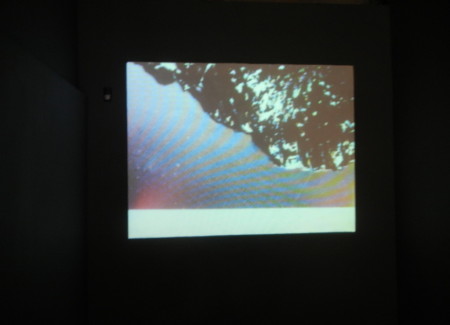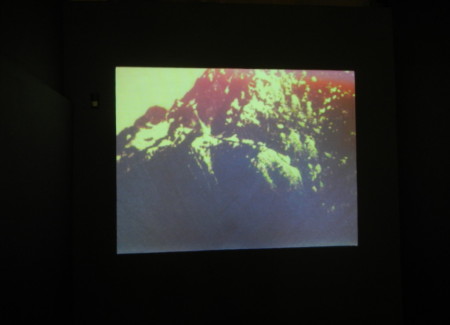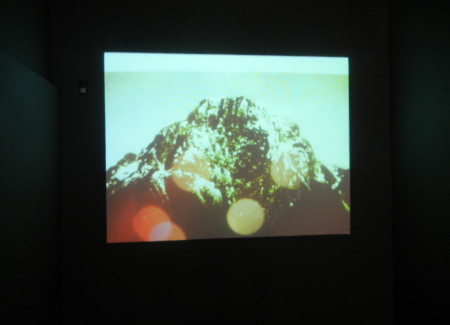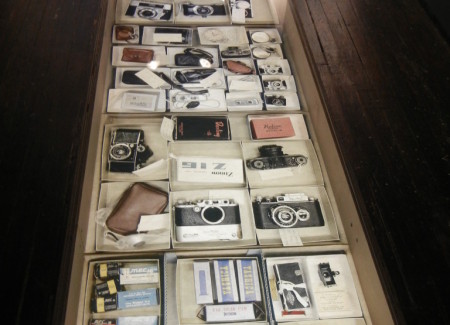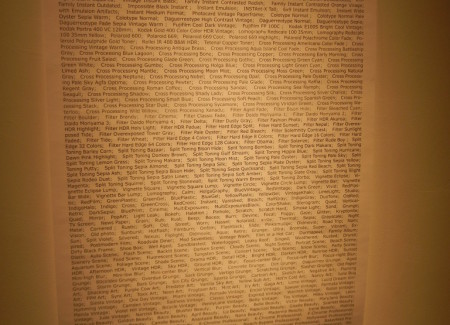JTF (just the facts): A total of 2 photographic works, displayed in a single darkened gallery space. At the back of the room, a slide show of mountain imagery is projected on the wall; it was made in 2013 and comes as an .m4v file on a flash drive in an edition of 50. A print containing the entire list of filters and smart phone camera apps that were used to make the series is pinned directly to the wall in the front of the gallery (dimensions and edition information were not available on the show checklist). In the center of the room, a glass vitrine holds a series of 17 archival pigment prints on Hahnmuhle Photo rag paper, made in 2013. Each of the prints ranges from 17×10 to 17×15, and the set is available in an edition of 3+2AP. (Installation shots below.)
Comments/Context: Penelope Umbrico’s new show seems remarkably of the moment, a split personality paired study of digital smartphone apps and filters and cartons of analog film cameras in the collection of Smithsonian. It captures that feeling in betweenness that has enveloped contemporary photography, where the disruptive technological transition has us looking both forward and back in the search for answers.
Umbrico’s Mountains, Moving slide show has an elegant premise. Start with rephotographing a single straightforward mountain image by Ansel Adams (apparently made by Adams for students to use while learning about photography) and then apply a dizzying array of smartphone filters and apps to that same image, showing each iteration in succession. The effect is something like watching a lava lamp; the colors flow in and out, the image turns and distorts, all in a mediative calm that promotes looking carefully at what is changing. As I stood and watched the mountain morph again and again and again, I couldn’t help but feel a kind of wonder mixed with apprehension – the power of our new software tools to reform our world of imagery is breathtakingly diverse, and we are only starting to understand the creative freedoms it has unleashed. The mountains stubbornly resist the effects of pixelization, flaring, poured in colorization, and resolution changes, but the breadth of the assault is pretty impressive.
The glass vitrine in the center of the gallery is in many ways a perfect foil to the digital slide show. In it, Umbrico has laid out top down photographs of cameras in the Smithsonian archives, each organized and catalogued in its own box. As you look down at these obsolete cameras, there is a palpable sense of history, of technology changing and leaving older methods behind. These cameras are no longer in use; they have become historical specimens, relics of an analog age, fascinating in their own right, but still boxed up and put away.
At the conceptual level, this show is quietly thought provoking, offering a complex and nuanced reading of the relationship between the past and present in photography. While there are plenty of bright, almost psychedelic, colors on view, this is almost more of a thinking show than a seeing show. It digs into the meaty questions of how we will bridge between the two worlds of image making, how the artistic process will be transformed, and how the old might inform the new. If Mountains, Moving is any guide, we’re in for a constantly shifting and tantalizingly elusive photographic future, something far beyond postmodern appropriation, where fragments of our common experience are continuously filtered and reworked and where look and feel are constantly in flux. In this futuristic present, the mountains stay the same, but everything else is up for reinterpretation.
Collector’s POV: The works on view are priced as follows. The Mountains, Moving digital slide show is priced at $50. A portfolio of 10 archival pigment prints of selected images from the project (each 8×10, in an edition of 3+2AP) is also available for $4500. The array of camera images from the Smithsonian is available for $25000 (17 prints) or $18000 (1 single print, 16×164, also in an edition of 3+2AP). Umbrico’s work has little secondary market history, so gallery retail remains the best option for those collectors interested in following up.
